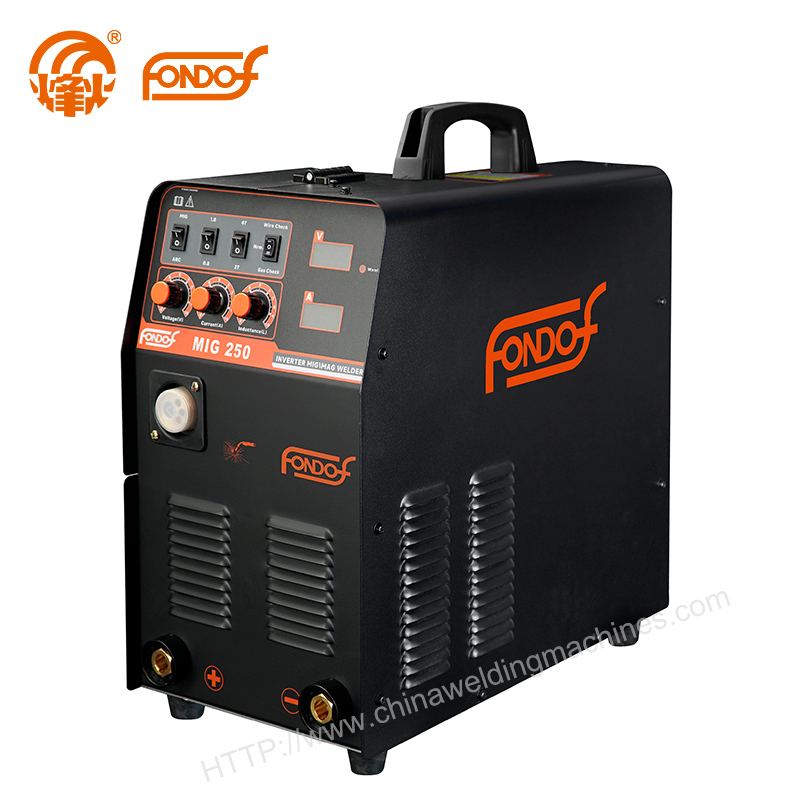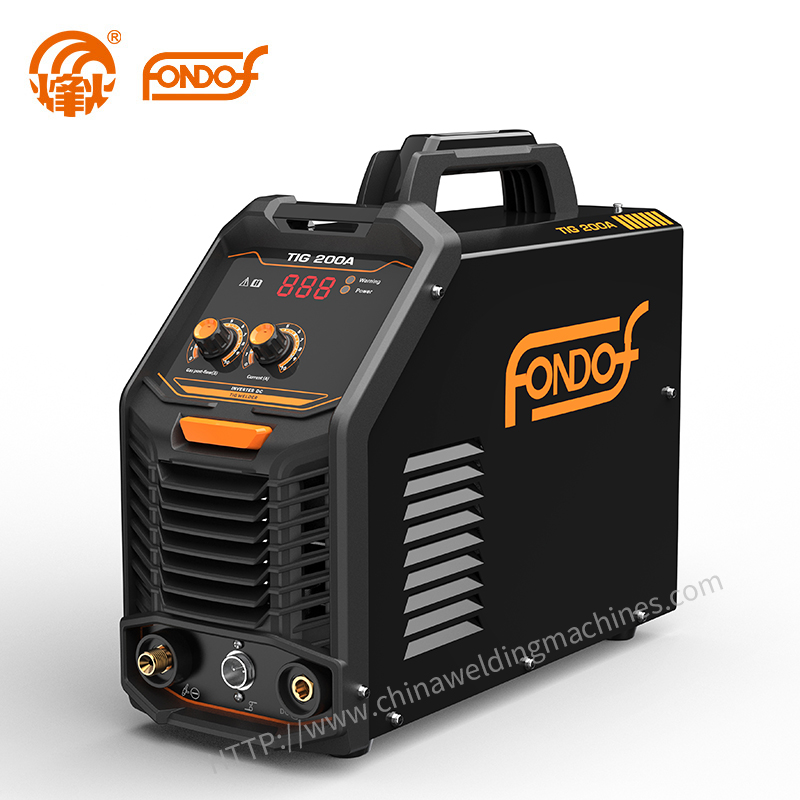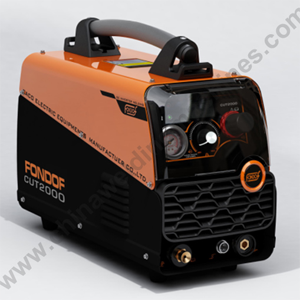MIG vs TIG Welding: What Is the Difference Between Them?
 Aug. 07, 2024
Aug. 07, 2024
MIG and TIG welding are common welding methods that share similarities, such as using an electric arc and shielding gas. However, they differ significantly in several aspects, including the type of welding electrodes used to create the arc. In MIG welding, a solid wire is machine-fed to the weld area, while in TIG welding, a non-consumable electrode and a hand-held filler rod are used to form the weld.
These differences give MIG and TIG welding their unique advantages, disadvantages, and preferred applications. To understand these processes further, let's explore each one in more detail.
MIG Process
Metal inert gas (MIG) welding, also known as gas metal arc welding (GMAW), involves creating a weld using a semi-automatic or fully automatic arc. This process employs a consumable wire electrode as the filler material and a shielding gas to protect the weld, enhance weld penetration, and minimize weld bead porosity.
Both the electrode and the shielding gas are fed through the welding gun (or torch). The shielding gas typically consists of a mixture of 75% argon and 25% CO2, though other mixtures may be used depending on the materials being welded and specific conditions.
The process uses a continuous, consumable wire electrode and shielding gas, which are delivered through a lead to the welding gun. The composition and diameter of the wire electrode vary based on the types of metals being joined, part thickness, and joint configuration. The wire feed speed (WFS) settings control the pace at which the electrode is fed into the weld, ensuring sufficient weld metal for a strong joint.
TIG Process
Tungsten inert gas (TIG) welding, also known as gas tungsten arc welding (GTAW), utilizes an arc similar to MIG welding but employs a non-consumable tungsten electrode. Unlike MIG welding, TIG uses a separate consumable filler material, typically a rod that is manually fed into the weld pool. This means both hands are required for TIG welding: one for the tungsten electrode and the other for the filler rod.
The composition and size of the filler rod vary depending on the specific weld being performed. TIG welding also uses a shielding gas, typically 100% argon, as CO2 can promote tungsten oxide formation, which can prematurely wear the electrode and contaminate the weld.
Additionally, TIG welding often involves the use of a foot pedal to control the amperage, allowing the welder to adjust the heat during welding. This feature provides precise control over the amount of heat introduced to the metal, ensuring a clean and accurate weld.
Advantages and Disadvantages
MIG Advantages and Disadvantages
MIG (metal inert gas) welding is commonly used for joining large and thick materials, utilizing a consumable wire that serves as both the electrode and filler material. One of the main advantages of MIG welding is its speed; it allows for faster production times, which can lower costs. Additionally, MIG welding is relatively easy to learn, enabling even novice welders to produce welds that require minimal cleaning and finishing.
However, MIG welds typically lack the precision, strength, and aesthetic quality that can be achieved by a skilled TIG welder.
TIG Advantages and Disadvantages
TIG (tungsten inert gas) welding is a versatile technique capable of joining a wide range of small and thin materials. It uses a non-consumable tungsten electrode along with an optional, separate filler rod. While TIG welding offers greater control over the welding process, resulting in stronger, more precise, and more aesthetically pleasing welds, it is slower than MIG welding. This slower pace increases production times and costs.
Moreover, TIG welding is more challenging to master and requires skilled practitioners to achieve the desired weld quality and accuracy.
Applications
MIG Applications
MIG welding is a versatile and accessible technique, making it suitable for a wide range of applications. It is relatively easy to learn and can join various materials, including aluminum, mild steel, and stainless steel. MIG welding is particularly effective for thicker metals and is often used in situations where the aesthetic quality of the weld is not a primary concern.
TIG Applications
TIG welding, though more challenging to master, offers greater precision than MIG welding. It is ideal for joining thinner materials and is capable of welding a diverse array of metals, including aluminum, copper, steel, titanium, and more. Due to its precision, TIG welding is commonly employed in applications requiring high-quality welds, such as aerospace, motorsport, industrial structures, and production line manufacturing.
The Key Differences
While both MIG and TIG welding processes have their merits, there are several key differences that distinguish them. MIG welding is generally considered easier to learn and perform, as well as being faster and more suitable for thicker materials. In contrast, TIG welding offers greater control and precision, making it ideal for thinner materials and producing neater welds with minimal finishing required. Here’s a breakdown of the main differences:
1. Weld Strength
TIG welds typically yield stronger joints than MIG welds. This is due to the narrow, focused arc of TIG welding, which provides better penetration of the metal. Additionally, TIG weld beads tend to have fewer voids and defects, resulting in a more robust weld. However, MIG welds can still achieve strong joints by preparing the joint with a V-shaped groove to enhance penetration and by maintaining proper travel speed and torch positioning.
2. Weld Speed
MIG welding generally offers faster production speeds. The process uses air-cooled equipment that automatically feeds filler material into the weld pool, and the broader arc helps dissipate heat, allowing for quicker progression. In contrast, TIG welding cannot match these speeds, as the welder must manually feed the filler rod and control the heat with a foot pedal. The air-cooled torches in TIG welding can overheat during long runs, requiring either cooling periods or the use of more expensive water-cooled torches.
3. Shielding Gas
Both processes require shielding gas to protect the weld pool from reactive gases in the air. TIG welding typically uses pure argon due to the sensitivity of the tungsten electrode to gases like oxygen and CO2. MIG welding often employs a mix of argon and CO2 (usually 75/25%), which stabilizes the arc and enhances penetration. However, pure argon can be used in MIG welding for aluminum, and pure CO2 can be used to reduce costs and increase penetration. The flow rates also differ, with MIG generally using 35 to 50 cubic feet per hour, while TIG operates at 15 to 25 cubic feet per hour.
4. Weld Aesthetics
TIG welding produces aesthetically superior welds, characterized by minimal spatter and a clean appearance. TIG welds, often resembling "stacks of coins," require little finishing and are visually appealing, making them ideal for visible joints. MIG welds, while capable of producing good-looking beads, typically have more spatter and may require more finishing, making them less suitable for applications where appearance is critical.
5. Process Difficulty
MIG welding is more user-friendly and easier to master than TIG welding. TIG requires a higher level of skill, as it involves using both hands—one for the torch and the other for the filler rod—along with a foot pedal to control the amperage. This setup offers greater control but can be challenging to learn. MIG welding, on the other hand, simplifies the process by automating the filler feed and requiring only one hand to operate the welding gun.
6. Cost
TIG welding is generally more expensive than MIG welding. This is due to the slower deposition rates, the requirement for more skilled (and thus more costly) welders, and the additional prep work involved. Additionally, the equipment and consumables for TIG welding are often pricier than those for MIG, contributing to the higher overall cost per foot of weld.
What's the Difference Between a MIG Welder and a Regular Welder?
A MIG gun is designed to run continuously for long periods of time, making them more efficient and productive than its counterpart. MIG welders are efficient is because the process is automated and relatively easy to learn, which reduces the amount of time and effort required for training.
Conclusion
MIG welding uses a continuously-fed electrode wire and shielding gas via a hand-held torch. TIG welding uses a non-consumable tungsten electrode with a shielding gas fed through a supply line and a separate, hand held filler rod that is manually fed into the weld pool. TIG welding often utilizes a torch-mounted control or foot pedal to adjust the amperage. Additionally, the two welding methods typically employ different shielding gases.
Neither MIG nor TIG can be universally considered "better" than the other, as each has its own advantages and disadvantages depending on the specific application.
MIG welding is known for being cost-effective, fast, and easy to learn, enabling less experienced welders to produce good-quality welds. In contrast, TIG welding is more challenging to master, slower, and generally more expensive. However, it offers unparalleled precision and aesthetic quality that MIG welding cannot match. While MIG welding is ideal for thicker materials, TIG welding is better suited for thinner materials or more delicate tasks.





























